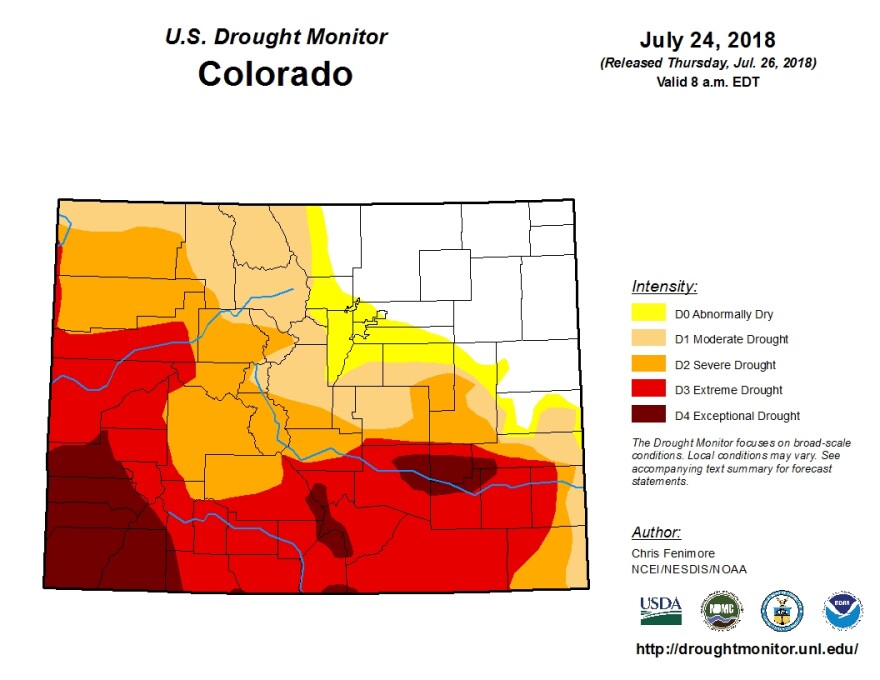Parts of Colorado are experiencing the worst drought conditions in more than a decade.
The severity of the drought varies across the state, from few if any impacts in the state’s northeastern corner to severe and record-breaking conditions in the southern half of the state.
Nearly 40 percent of Colorado’s land area is classified as being in extreme drought conditions or worse. The driest reaches are in the state’s southern and western halves.
On the state’s Western Slope limited rain and high temperatures have caused tributaries to the Colorado River to run at record low levels. The San Juan River is on track to have its lowest annual runoff on record, edging out the previous low point recorded in 2002.

Colorado Parks and Wildlife officials warned anglers to avoid fishing in drought-stressed mountain streams. Warm weather and low water can deplete oxygen in the water, weakening trout populations.
Drought conditions continue to worsen in the state’s southeastern corner. Christine Mergelman works with ranchers in Elbert County in her role with the U.S. Department of Agriculture’s Farm Service Agency. She says some producers are beginning to move cattle onto winter pastures because their summer range is too dry.
“Now we’re in a problem where it’s so dry, what are we going to do when it gets [to be] that time?” Mergelman says. “They’re starting to sell. It is not good.”
On the Eastern Plains frequent hail storms have caused damage to corn and vegetable crops. Peter Goble is a climatologist with the Colorado Climate Center.
“2018 seems to have been drought or hail, pick your poison,” Goble says.
The only bright spot is in the northeast and on the Front Range, where recent cool and wet weather has kept rivers from dropping to below average levels.
The National Weather Service forecasts most of Colorado to experience below average precipitation and above average temperatures for the next eight to 14 days.
This story is part of a project covering the Colorado River, produced by KUNC and supported through a Walton Family Foundation grant. KUNC is solely responsible for its editorial content.






